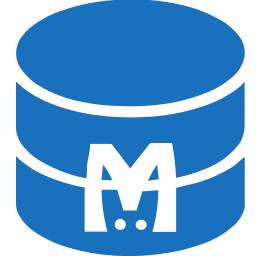Rotate Authentication of MongoDB
Rotate Authentication is a feature of the KubeDB Ops-Manager that allows you to rotate a MongoDB user’s authentication credentials using a MongoDBOpsRequest. There are two ways to perform this rotation.
- Operator Generated: The KubeDB operator automatically generates a random credential, updates the existing secret with the new credential The KubeDB operator automatically generates a random credential and updates the existing secret with the new credential..
- User Defined: The user can create their own credentials by defining a Secret of type
kubernetes.io/basic-authcontaining the desiredpassword, and then reference this Secret in theMongoDBOpsRequest.
Before You Begin
You should be familiar with the following
KubeDBconcepts:At first, you need to have a Kubernetes cluster, and the kubectl command-line tool must be configured to communicate with your cluster. If you do not already have a cluster, you can create one by using kind.
Now, install KubeDB cli on your workstation and KubeDB operator in your cluster following the steps here.
To keep things isolated, this tutorial uses a separate namespace called
demothroughout this tutorial.$ kubectl create ns demo namespace/demo created
Create a MongoDB database
KubeDB implements a MongoDB CRD to define the specification of a MongoDB database.
You can apply this yaml file:
apiVersion: kubedb.com/v1alpha2
kind: MongoDB
metadata:
name: mgo-quickstart
namespace: demo
spec:
version: "4.4.26"
replicaSet:
name: "rs1"
replicas: 3
storageType: Durable
storage:
storageClassName: "standard"
accessModes:
- ReadWriteOnce
resources:
requests:
storage: 1Gi
terminationPolicy: WipeOut
Command:
$ kubectl apply -f mongobd.yaml
mongodb.kubedb.com/mgo-quickstart created
Or, you can deploy by using command:
$ kubectl create -f https://github.com/kubedb/docs/raw/{{ .version }}/docs/examples/mongodb/quickstart/replicaset-v1alpha2.yaml
mongodb.kubedb.com/mgo-quickstart created
Now, wait until mgo-quickstart has status Ready. i.e,
$ kubectl get mg -n demo -w
NAME VERSION STATUS AGE
mgo-quickstart 4.4.26 Ready 8m1s
Verify authentication
The user can verify whether they are authorized by executing a query directly in the database. To do this, the user needs username and password in order to connect to the database using the kubectl exec command. Below is an example showing how to retrieve the credentials from the Secret.
$ kubectl get mg -n demo mgo-quickstart -ojson | jq .spec.authSecret.name
"mgo-quickstart-auth"
$ kubectl get secret -n demo mgo-quickstart-auth -o=jsonpath='{.data.username}' | base64 -d
root⏎
$ kubectl get secret -n demo mgo-quickstart-auth -o=jsonpath='{.data.password}' | base64 -d
eR*W_mz6bjyZxeiG⏎
Now, you can exec into the pod mgo-quickstart and connect to database using username and password
$ kubectl exec -it -n demo mgo-quickstart-0 -- bash
Defaulted container "mongodb" out of: mongodb, replication-mode-detector, copy-config (init)
mongodb@mgo-quickstart-0:/$ mongo -u root -p $MONGO_INITDB_ROOT_PASSWORD
MongoDB shell version v4.4.26
connecting to: mongodb://127.0.0.1:27017/?compressors=disabled&gssapiServiceName=mongodb
Implicit session: session { "id" : UUID("dcd7f912-93d0-4f24-843d-5e2cbecbb6e0") }
MongoDB server version: 4.4.26
Welcome to the MongoDB shell.
For interactive help, type "help".
For more comprehensive documentation, see
https://docs.mongodb.com/
Questions? Try the MongoDB Developer Community Forums
https://community.mongodb.com
---
The server generated these startup warnings when booting:
2025-07-10T08:40:43.374+00:00: Using the XFS filesystem is strongly recommended with the WiredTiger storage engine. See http://dochub.mongodb.org/core/prodnotes-filesystem
---
rs1:SECONDARY> use Mohiniyattam
switched to db Mohiniyattam
If you can access the data table and run queries, it means the secrets are working correctly.
Create RotateAuth MongoDBOpsRequest
1. Using operator generated credentials:
In order to rotate authentication to the MongoDB using operator generated, we have to create a MongoDBOpsRequest CRO with RotateAuth type. Below is the YAML of the MongoDBOpsRequest CRO that we are going to create,
apiVersion: ops.kubedb.com/v1alpha1
kind: MongoDBOpsRequest
metadata:
name: mgops-rotate-auth-generated
namespace: demo
spec:
type: RotateAuth
databaseRef:
name: mgo-quickstart
timeout: 5m
apply: IfReady
Here,
spec.databaseRef.namespecifies that we are performing rotate authentication operation onmgo-quickstartcluster.spec.typespecifies that we are performingRotateAuthon MongoDB.
Let’s create the MongoDBOpsRequest CR we have shown above,
$ kubectl apply -f https://github.com/kubedb/docs/raw/{{ .version }}/docs/examples/mongodb/rotate-auth/rotate-auth-generated.yaml
mongodbopsrequest.ops.kubedb.com/mgops-rotate-auth-generated created
Let’s wait for MongoDBOpsrequest to be Successful. Run the following command to watch MongoDBOpsrequest CRO
$kubectl get mongodbopsrequest -n demo
NAME TYPE STATUS AGE
mgops-rotate-auth-generated RotateAuth Successful 45m
If we describe the MongoDBOpsRequest we will get an overview of the steps that were followed.
$ kubectl describe mongodbopsrequest -n demo mgops-rotate-auth-generated
Name: mgops-rotate-auth-generated
Namespace: demo
Labels: <none>
Annotations: <none>
API Version: ops.kubedb.com/v1alpha1
Kind: MongoDBOpsRequest
Metadata:
Creation Timestamp: 2025-07-10T08:39:47Z
Generation: 1
Resource Version: 607260
UID: 20c8ac77-20b8-45b0-b213-a3f8f06cc379
Spec:
Apply: IfReady
Database Ref:
Name: mgo-quickstart
Timeout: 5m
Type: RotateAuth
Status:
Conditions:
Last Transition Time: 2025-07-10T08:39:47Z
Message: MongoDB ops request has started to rotate auth for mongodb
Observed Generation: 1
Reason: RotateAuth
Status: True
Type: RotateAuth
Last Transition Time: 2025-07-10T08:39:50Z
Message: Successfully generated new credentials
Observed Generation: 1
Reason: UpdateCredential
Status: True
Type: UpdateCredential
Last Transition Time: 2025-07-10T08:39:55Z
Message: Successfully updated petsets rotate auth type
Observed Generation: 1
Reason: UpdatePetSets
Status: True
Type: UpdatePetSets
Last Transition Time: 2025-07-10T08:40:00Z
Message: check is master; ConditionStatus:True; PodName:mgo-quickstart-1
Observed Generation: 1
Status: True
Type: CheckIsMaster--mgo-quickstart-1
Last Transition Time: 2025-07-10T08:40:00Z
Message: evict pod; ConditionStatus:True; PodName:mgo-quickstart-1
Observed Generation: 1
Status: True
Type: EvictPod--mgo-quickstart-1
Last Transition Time: 2025-07-10T08:40:15Z
Message: check pod ready; ConditionStatus:True; PodName:mgo-quickstart-1
Observed Generation: 1
Status: True
Type: CheckPodReady--mgo-quickstart-1
Last Transition Time: 2025-07-10T08:40:15Z
Message: check is master; ConditionStatus:True; PodName:mgo-quickstart-2
Observed Generation: 1
Status: True
Type: CheckIsMaster--mgo-quickstart-2
Last Transition Time: 2025-07-10T08:40:15Z
Message: evict pod; ConditionStatus:True; PodName:mgo-quickstart-2
Observed Generation: 1
Status: True
Type: EvictPod--mgo-quickstart-2
Last Transition Time: 2025-07-10T08:40:40Z
Message: check pod ready; ConditionStatus:True; PodName:mgo-quickstart-2
Observed Generation: 1
Status: True
Type: CheckPodReady--mgo-quickstart-2
Last Transition Time: 2025-07-10T08:40:40Z
Message: check is master; ConditionStatus:True; PodName:mgo-quickstart-0
Observed Generation: 1
Status: True
Type: CheckIsMaster--mgo-quickstart-0
Last Transition Time: 2025-07-10T08:40:40Z
Message: step down; ConditionStatus:True; PodName:mgo-quickstart-0
Observed Generation: 1
Status: True
Type: StepDown--mgo-quickstart-0
Last Transition Time: 2025-07-10T08:40:40Z
Message: evict pod; ConditionStatus:True; PodName:mgo-quickstart-0
Observed Generation: 1
Status: True
Type: EvictPod--mgo-quickstart-0
Last Transition Time: 2025-07-10T08:40:55Z
Message: check pod ready; ConditionStatus:True; PodName:mgo-quickstart-0
Observed Generation: 1
Status: True
Type: CheckPodReady--mgo-quickstart-0
Last Transition Time: 2025-07-10T08:40:55Z
Message: Successfully Restarted ReplicaSet nodes
Observed Generation: 1
Reason: RestartReplicaSet
Status: True
Type: RestartReplicaSet
Last Transition Time: 2025-07-10T08:40:55Z
Message: Successfully Rotate Auth
Observed Generation: 1
Reason: Successful
Status: True
Type: Successful
Observed Generation: 1
Phase: Successful
Events:
Type Reason Age From Message
---- ------ ---- ---- -------
Normal PauseDatabase 44m KubeDB Ops-manager Operator Pausing MongoDB demo/mgo-quickstart
Normal PauseDatabase 44m KubeDB Ops-manager Operator Successfully paused MongoDB demo/mgo-quickstart
Normal VersionUpdate 44m KubeDB Ops-manager Operator Updating PetSets
Normal VersionUpdate 44m KubeDB Ops-manager Operator Successfully Updated PetSets
Warning check is master; ConditionStatus:True; PodName:mgo-quickstart-1 44m KubeDB Ops-manager Operator check is master; ConditionStatus:True; PodName:mgo-quickstart-1
Warning evict pod; ConditionStatus:True; PodName:mgo-quickstart-1 44m KubeDB Ops-manager Operator evict pod; ConditionStatus:True; PodName:mgo-quickstart-1
Warning check pod ready; ConditionStatus:False; PodName:mgo-quickstart-1 44m KubeDB Ops-manager Operator check pod ready; ConditionStatus:False; PodName:mgo-quickstart-1
Warning check pod ready; ConditionStatus:True; PodName:mgo-quickstart-1 44m KubeDB Ops-manager Operator check pod ready; ConditionStatus:True; PodName:mgo-quickstart-1
Warning check is master; ConditionStatus:True; PodName:mgo-quickstart-2 44m KubeDB Ops-manager Operator check is master; ConditionStatus:True; PodName:mgo-quickstart-2
Warning evict pod; ConditionStatus:True; PodName:mgo-quickstart-2 44m KubeDB Ops-manager Operator evict pod; ConditionStatus:True; PodName:mgo-quickstart-2
Warning check pod ready; ConditionStatus:False; PodName:mgo-quickstart-2 44m KubeDB Ops-manager Operator check pod ready; ConditionStatus:False; PodName:mgo-quickstart-2
Warning check pod ready; ConditionStatus:True; PodName:mgo-quickstart-1 43m KubeDB Ops-manager Operator check pod ready; ConditionStatus:True; PodName:mgo-quickstart-1
Warning check pod ready; ConditionStatus:True; PodName:mgo-quickstart-1 43m KubeDB Ops-manager Operator check pod ready; ConditionStatus:True; PodName:mgo-quickstart-1
Warning check pod ready; ConditionStatus:True; PodName:mgo-quickstart-1 43m KubeDB Ops-manager Operator check pod ready; ConditionStatus:True; PodName:mgo-quickstart-1
Warning check pod ready; ConditionStatus:True; PodName:mgo-quickstart-1 43m KubeDB Ops-manager Operator check pod ready; ConditionStatus:True; PodName:mgo-quickstart-1
Warning check pod ready; ConditionStatus:True; PodName:mgo-quickstart-1 43m KubeDB Ops-manager Operator check pod ready; ConditionStatus:True; PodName:mgo-quickstart-1
Warning check pod ready; ConditionStatus:True; PodName:mgo-quickstart-2 43m KubeDB Ops-manager Operator check pod ready; ConditionStatus:True; PodName:mgo-quickstart-2
Warning check is master; ConditionStatus:True; PodName:mgo-quickstart-0 43m KubeDB Ops-manager Operator check is master; ConditionStatus:True; PodName:mgo-quickstart-0
Warning step down; ConditionStatus:True; PodName:mgo-quickstart-0 43m KubeDB Ops-manager Operator step down; ConditionStatus:True; PodName:mgo-quickstart-0
Warning evict pod; ConditionStatus:True; PodName:mgo-quickstart-0 43m KubeDB Ops-manager Operator evict pod; ConditionStatus:True; PodName:mgo-quickstart-0
Warning check pod ready; ConditionStatus:False; PodName:mgo-quickstart-0 43m KubeDB Ops-manager Operator check pod ready; ConditionStatus:False; PodName:mgo-quickstart-0
Warning check pod ready; ConditionStatus:True; PodName:mgo-quickstart-1 43m KubeDB Ops-manager Operator check pod ready; ConditionStatus:True; PodName:mgo-quickstart-1
Warning check pod ready; ConditionStatus:True; PodName:mgo-quickstart-2 43m KubeDB Ops-manager Operator check pod ready; ConditionStatus:True; PodName:mgo-quickstart-2
Warning check pod ready; ConditionStatus:True; PodName:mgo-quickstart-1 43m KubeDB Ops-manager Operator check pod ready; ConditionStatus:True; PodName:mgo-quickstart-1
Warning check pod ready; ConditionStatus:True; PodName:mgo-quickstart-2 43m KubeDB Ops-manager Operator check pod ready; ConditionStatus:True; PodName:mgo-quickstart-2
Warning check pod ready; ConditionStatus:True; PodName:mgo-quickstart-1 43m KubeDB Ops-manager Operator check pod ready; ConditionStatus:True; PodName:mgo-quickstart-1
Warning check pod ready; ConditionStatus:True; PodName:mgo-quickstart-2 43m KubeDB Ops-manager Operator check pod ready; ConditionStatus:True; PodName:mgo-quickstart-2
Warning check pod ready; ConditionStatus:True; PodName:mgo-quickstart-0 43m KubeDB Ops-manager Operator check pod ready; ConditionStatus:True; PodName:mgo-quickstart-0
Normal RestartReplicaSet 43m KubeDB Ops-manager Operator Successfully Restarted ReplicaSet nodes
Normal ResumeDatabase 43m KubeDB Ops-manager Operator Resuming MongoDB demo/mgo-quickstart
Normal ResumeDatabase 43m KubeDB Ops-manager Operator Successfully resumed MongoDB demo/mgo-quickstart
Normal Successful 43m KubeDB Ops-manager Operator Successfully Rotate Auth
Verify Auth is rotated
$ kubectl get mg -n demo mgo-quickstart -ojson | jq .spec.authSecret.name
"mgo-quickstart-auth"
$ kubectl get secret -n demo mgo-quickstart-auth -o=jsonpath='{.data.username}' | base64 -d
root⏎
$ kubectl get secret -n demo mgo-quickstart-auth -o=jsonpath='{.data.password}' | base64 -d
09wZM.)t8kpwKF5z⏎
Also, there will be two more new keys in the secret that stores the previous credentials. The keys are username.prev and password.prev. You can find the secret and its data by running the following command:
$ kubectl get secret -n demo mgo-quickstart-auth -o go-template='{{ index .data "username.prev" }}' | base64 -d
root⏎
$ kubectl get secret -n demo mgo-quickstart-auth -o go-template='{{ index .data "password.prev" }}' | base64 -d
eR*W_mz6bjyZxeiG⏎
The above output shows that the password has been changed successfully. The previous username & password is stored for rollback purpose.
2. Using user created credentials
At first, we need to create a secret with kubernetes.io/basic-auth type using custom username and password. Below is the command to create a secret with kubernetes.io/basic-auth type,
Note:
Usernamemust beroot
$ kubectl create secret generic quick-mg-user-auth -n demo \
--type=kubernetes.io/basic-auth \
--from-literal=username=root \
--from-literal=password=mongodb-secret
secret/quick-mg-user-auth created
Now create a MongoDBOpsRequest with RotateAuth type. Below is the YAML of the MongoDBOpsRequest that we are going to create,
apiVersion: ops.kubedb.com/v1alpha1
kind: MongoDBOpsRequest
metadata:
name: mgops-rotate-auth-user
namespace: demo
spec:
type: RotateAuth
databaseRef:
name: mgo-quickstart
authentication:
secretRef:
name: quick-mg-user-auth
timeout: 5m
apply: IfReady
Here,
spec.databaseRef.namespecifies that we are performing rotate authentication operation onmgo-quickstartcluster.spec.typespecifies that we are performingRotateAuthon MongoDB.spec.authentication.secretRef.namespecifies that we are usingquick-mg-user-authasspec.authSecret.namefor authentication.
Let’s create the MongoDBOpsRequest CR we have shown above,
$ kubectl apply -f https://github.com/kubedb/docs/raw/v2025.6.30/docs/examples/mongodb/rotate-auth/rotate-auth-user.yaml
mongodbopsrequest.ops.kubedb.com/mgops-rotate-auth-user created
Let’s wait for MongoDBOpsRequest to be Successful. Run the following command to watch MongoDBOpsRequest CRO:
$ kubectl get mongodbopsrequest -n demo
NAME TYPE STATUS AGE
mgops-rotate-auth-generated RotateAuth Successful 153m
mgops-rotate-auth-user RotateAuth Successful 59m
We can see from the above output that the MongoDBOpsRequest has succeeded. If we describe the MongoDBOpsRequest we will get an overview of the steps that were followed.
$ kubectl describe mgops -n demo mgops-rotate-auth-user
Name: mgops-rotate-auth-user
Namespace: demo
Labels: <none>
Annotations: <none>
API Version: ops.kubedb.com/v1alpha1
Kind: MongoDBOpsRequest
Metadata:
Creation Timestamp: 2025-07-16T11:46:29Z
Generation: 1
Resource Version: 810101
UID: eec4365a-cc3d-4e40-b603-7d41b9fbe781
Spec:
Apply: IfReady
Authentication:
Secret Ref:
Name: quick-mg-user-auth
Database Ref:
Name: mgo-quickstart
Timeout: 5m
Type: RotateAuth
Status:
Conditions:
Last Transition Time: 2025-07-16T11:46:29Z
Message: MongoDB ops request has started to rotate auth for mongodb
Observed Generation: 1
Reason: RotateAuth
Status: True
Type: RotateAuth
Last Transition Time: 2025-07-16T11:46:33Z
Message: Successfully referenced the user provided authSecret
Observed Generation: 1
Reason: UpdateCredential
Status: True
Type: UpdateCredential
Last Transition Time: 2025-07-16T11:46:38Z
Message: Successfully updated petsets rotate auth type
Observed Generation: 1
Reason: UpdatePetSets
Status: True
Type: UpdatePetSets
Last Transition Time: 2025-07-16T11:46:43Z
Message: check is master; ConditionStatus:True; PodName:mgo-quickstart-1
Observed Generation: 1
Status: True
Type: CheckIsMaster--mgo-quickstart-1
Last Transition Time: 2025-07-16T11:46:43Z
Message: evict pod; ConditionStatus:True; PodName:mgo-quickstart-1
Observed Generation: 1
Status: True
Type: EvictPod--mgo-quickstart-1
Last Transition Time: 2025-07-16T11:46:58Z
Message: check pod ready; ConditionStatus:True; PodName:mgo-quickstart-1
Observed Generation: 1
Status: True
Type: CheckPodReady--mgo-quickstart-1
Last Transition Time: 2025-07-16T11:46:58Z
Message: check is master; ConditionStatus:True; PodName:mgo-quickstart-2
Observed Generation: 1
Status: True
Type: CheckIsMaster--mgo-quickstart-2
Last Transition Time: 2025-07-16T11:46:58Z
Message: evict pod; ConditionStatus:True; PodName:mgo-quickstart-2
Observed Generation: 1
Status: True
Type: EvictPod--mgo-quickstart-2
Last Transition Time: 2025-07-16T11:47:13Z
Message: check pod ready; ConditionStatus:True; PodName:mgo-quickstart-2
Observed Generation: 1
Status: True
Type: CheckPodReady--mgo-quickstart-2
Last Transition Time: 2025-07-16T11:47:13Z
Message: check is master; ConditionStatus:True; PodName:mgo-quickstart-0
Observed Generation: 1
Status: True
Type: CheckIsMaster--mgo-quickstart-0
Last Transition Time: 2025-07-16T11:47:13Z
Message: step down; ConditionStatus:True; PodName:mgo-quickstart-0
Observed Generation: 1
Status: True
Type: StepDown--mgo-quickstart-0
Last Transition Time: 2025-07-16T11:47:13Z
Message: evict pod; ConditionStatus:True; PodName:mgo-quickstart-0
Observed Generation: 1
Status: True
Type: EvictPod--mgo-quickstart-0
Last Transition Time: 2025-07-16T11:47:28Z
Message: check pod ready; ConditionStatus:True; PodName:mgo-quickstart-0
Observed Generation: 1
Status: True
Type: CheckPodReady--mgo-quickstart-0
Last Transition Time: 2025-07-16T11:47:28Z
Message: Successfully Restarted ReplicaSet nodes
Observed Generation: 1
Reason: RestartReplicaSet
Status: True
Type: RestartReplicaSet
Last Transition Time: 2025-07-16T11:47:28Z
Message: Successfully Rotate Auth
Observed Generation: 1
Reason: Successful
Status: True
Type: Successful
Observed Generation: 1
Phase: Successful
Events:
Type Reason Age From Message
---- ------ ---- ---- -------
Normal PauseDatabase 6m20s KubeDB Ops-manager Operator Pausing MongoDB demo/mgo-quickstart
Normal PauseDatabase 6m20s KubeDB Ops-manager Operator Successfully paused MongoDB demo/mgo-quickstart
Normal VersionUpdate 6m16s KubeDB Ops-manager Operator Updating PetSets
Normal VersionUpdate 6m11s KubeDB Ops-manager Operator Successfully Updated PetSets
Warning check is master; ConditionStatus:True; PodName:mgo-quickstart-1 6m6s KubeDB Ops-manager Operator check is master; ConditionStatus:True; PodName:mgo-quickstart-1
Warning evict pod; ConditionStatus:True; PodName:mgo-quickstart-1 6m6s KubeDB Ops-manager Operator evict pod; ConditionStatus:True; PodName:mgo-quickstart-1
Warning check pod ready; ConditionStatus:False; PodName:mgo-quickstart-1 6m6s KubeDB Ops-manager Operator check pod ready; ConditionStatus:False; PodName:mgo-quickstart-1
Warning check pod ready; ConditionStatus:True; PodName:mgo-quickstart-1 5m51s KubeDB Ops-manager Operator check pod ready; ConditionStatus:True; PodName:mgo-quickstart-1
Warning check is master; ConditionStatus:True; PodName:mgo-quickstart-2 5m51s KubeDB Ops-manager Operator check is master; ConditionStatus:True; PodName:mgo-quickstart-2
Warning evict pod; ConditionStatus:True; PodName:mgo-quickstart-2 5m51s KubeDB Ops-manager Operator evict pod; ConditionStatus:True; PodName:mgo-quickstart-2
Warning check pod ready; ConditionStatus:False; PodName:mgo-quickstart-2 5m51s KubeDB Ops-manager Operator check pod ready; ConditionStatus:False; PodName:mgo-quickstart-2
Warning check pod ready; ConditionStatus:True; PodName:mgo-quickstart-1 5m46s KubeDB Ops-manager Operator check pod ready; ConditionStatus:True; PodName:mgo-quickstart-1
Warning check pod ready; ConditionStatus:True; PodName:mgo-quickstart-1 5m41s KubeDB Ops-manager Operator check pod ready; ConditionStatus:True; PodName:mgo-quickstart-1
Warning check pod ready; ConditionStatus:True; PodName:mgo-quickstart-1 5m36s KubeDB Ops-manager Operator check pod ready; ConditionStatus:True; PodName:mgo-quickstart-1
Warning check pod ready; ConditionStatus:True; PodName:mgo-quickstart-2 5m36s KubeDB Ops-manager Operator check pod ready; ConditionStatus:True; PodName:mgo-quickstart-2
Warning check is master; ConditionStatus:True; PodName:mgo-quickstart-0 5m36s KubeDB Ops-manager Operator check is master; ConditionStatus:True; PodName:mgo-quickstart-0
Warning step down; ConditionStatus:True; PodName:mgo-quickstart-0 5m36s KubeDB Ops-manager Operator step down; ConditionStatus:True; PodName:mgo-quickstart-0
Warning evict pod; ConditionStatus:True; PodName:mgo-quickstart-0 5m36s KubeDB Ops-manager Operator evict pod; ConditionStatus:True; PodName:mgo-quickstart-0
Warning check pod ready; ConditionStatus:False; PodName:mgo-quickstart-0 5m36s KubeDB Ops-manager Operator check pod ready; ConditionStatus:False; PodName:mgo-quickstart-0
Warning check pod ready; ConditionStatus:True; PodName:mgo-quickstart-1 5m31s KubeDB Ops-manager Operator check pod ready; ConditionStatus:True; PodName:mgo-quickstart-1
Warning check pod ready; ConditionStatus:True; PodName:mgo-quickstart-2 5m31s KubeDB Ops-manager Operator check pod ready; ConditionStatus:True; PodName:mgo-quickstart-2
Warning check pod ready; ConditionStatus:True; PodName:mgo-quickstart-1 5m26s KubeDB Ops-manager Operator check pod ready; ConditionStatus:True; PodName:mgo-quickstart-1
Warning check pod ready; ConditionStatus:True; PodName:mgo-quickstart-2 5m26s KubeDB Ops-manager Operator check pod ready; ConditionStatus:True; PodName:mgo-quickstart-2
Warning check pod ready; ConditionStatus:True; PodName:mgo-quickstart-1 5m21s KubeDB Ops-manager Operator check pod ready; ConditionStatus:True; PodName:mgo-quickstart-1
Warning check pod ready; ConditionStatus:True; PodName:mgo-quickstart-2 5m21s KubeDB Ops-manager Operator check pod ready; ConditionStatus:True; PodName:mgo-quickstart-2
Warning check pod ready; ConditionStatus:True; PodName:mgo-quickstart-0 5m21s KubeDB Ops-manager Operator check pod ready; ConditionStatus:True; PodName:mgo-quickstart-0
Normal RestartReplicaSet 5m21s KubeDB Ops-manager Operator Successfully Restarted ReplicaSet nodes
Normal ResumeDatabase 5m21s KubeDB Ops-manager Operator Resuming MongoDB demo/mgo-quickstart
Normal ResumeDatabase 5m21s KubeDB Ops-manager Operator Successfully resumed MongoDB demo/mgo-quickstart
Normal Successful 5m21s KubeDB Ops-manager Operator Successfully Rotate Auth
Verify auth is rotate
$ kubectl get mg -n demo mgo-quickstart -ojson | jq .spec.authSecret.name
"quick-mg-user-auth"
$ kubectl get secret -n demo quick-mg-user-auth -o=jsonpath='{.data.username}' | base64 -d
root⏎
$ kubectl get secret -n demo quick-mg-user-auth -o=jsonpath='{.data.password}' | base64 -d
mongodb-secret⏎
Also, there will be two more new keys in the secret that stores the previous credentials. The keys are username.prev and password.prev. You can find the secret and its data by running the following command:
$ kubectl get secret -n demo quick-mg-user-auth -o go-template='{{ index .data "username.prev" }}' | base64 -d
root⏎
$ kubectl get secret -n demo quick-mg-user-auth -o go-template='{{ index .data "password.prev" }}' | base64 -d
09wZM.)t8kpwKF5z⏎
The above output shows that the password has been changed successfully. The previous username & password is stored in the secret for rollback purpose.
Cleaning up
To clean up the Kubernetes resources you can delete the CRD or namespace. Or, you can delete one by one resource by their name by this tutorial, run:
$ kubectl delete mongodbopsrequest mgops-rotate-auth-generated mgops-rotate-auth-user -n demo
mongodbopsrequest.ops.kubedb.com "mgops-rotate-auth-generated" "mgops-rotate-auth-user" deleted
$ kubectl delete secret -n demo quick-mg-user-auth
secret "quick-mg-user-auth" deleted
$ kubectl delete secret -n demo mgo-quickstart-auth
secret "mgo-quickstart-auth" deleted
Next Steps
- Detail concepts of MongoDB object.
- Initialize MongoDB with Script.
- Monitor your MongoDB database with KubeDB using out-of-the-box Prometheus operator.
- Monitor your MongoDB database with KubeDB using out-of-the-box builtin-Prometheus.
- Use private Docker registry to deploy MongoDB with KubeDB.
- Use kubedb cli to manage databases like kubectl for Kubernetes.
- Detail concepts of MongoDB object.
- Want to hack on KubeDB? Check our contribution guidelines.

































